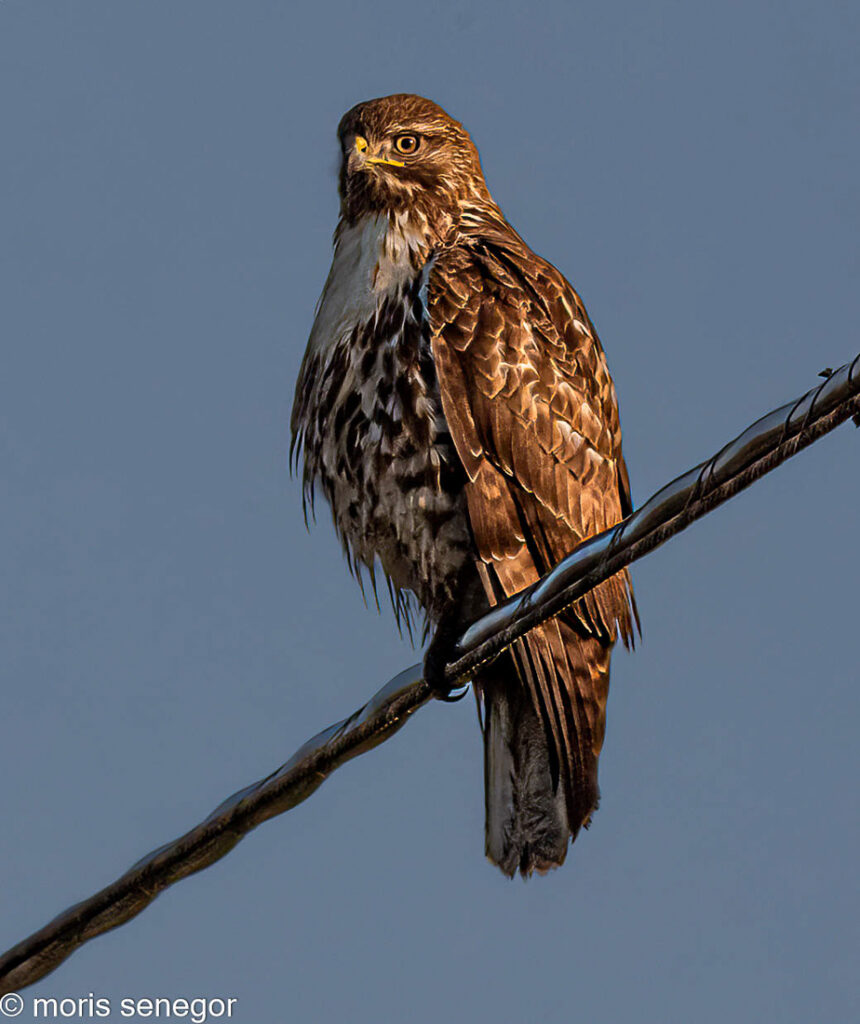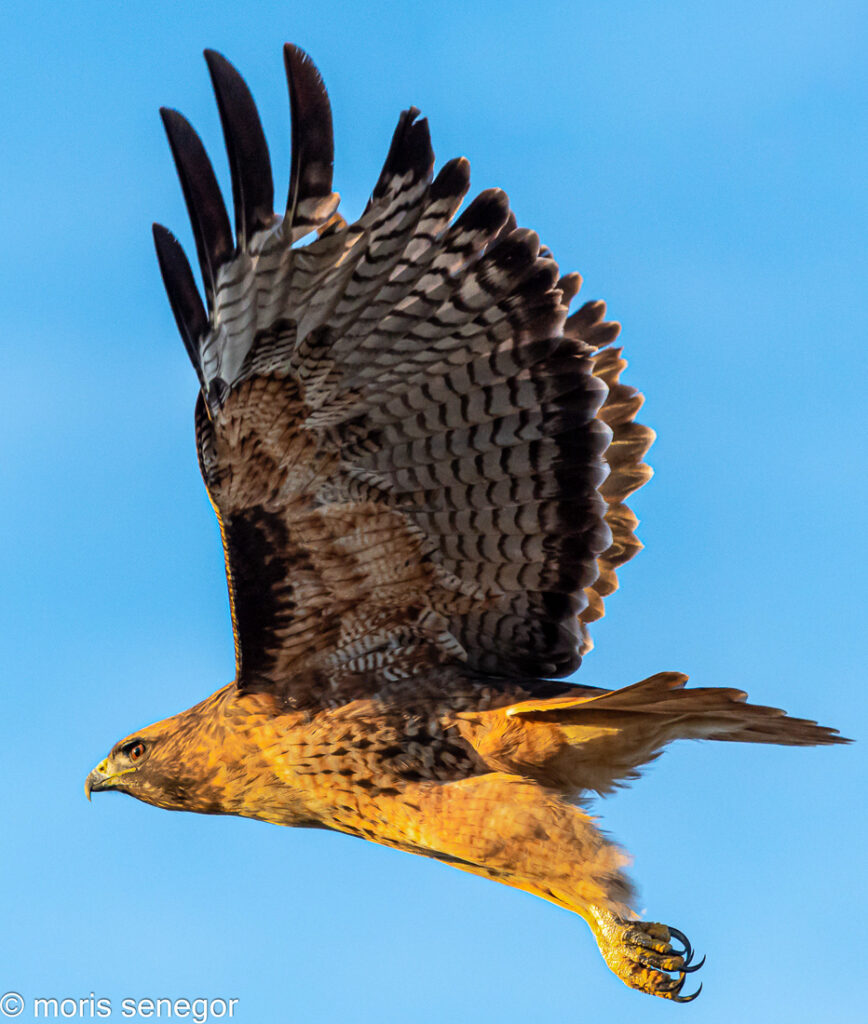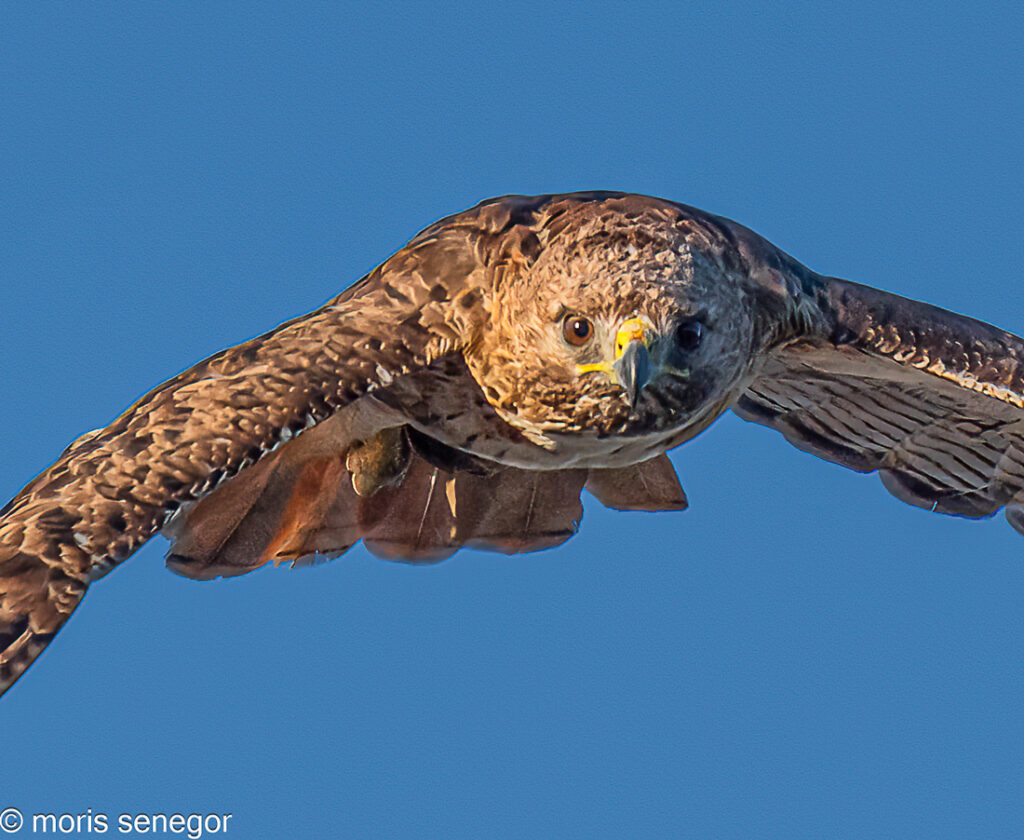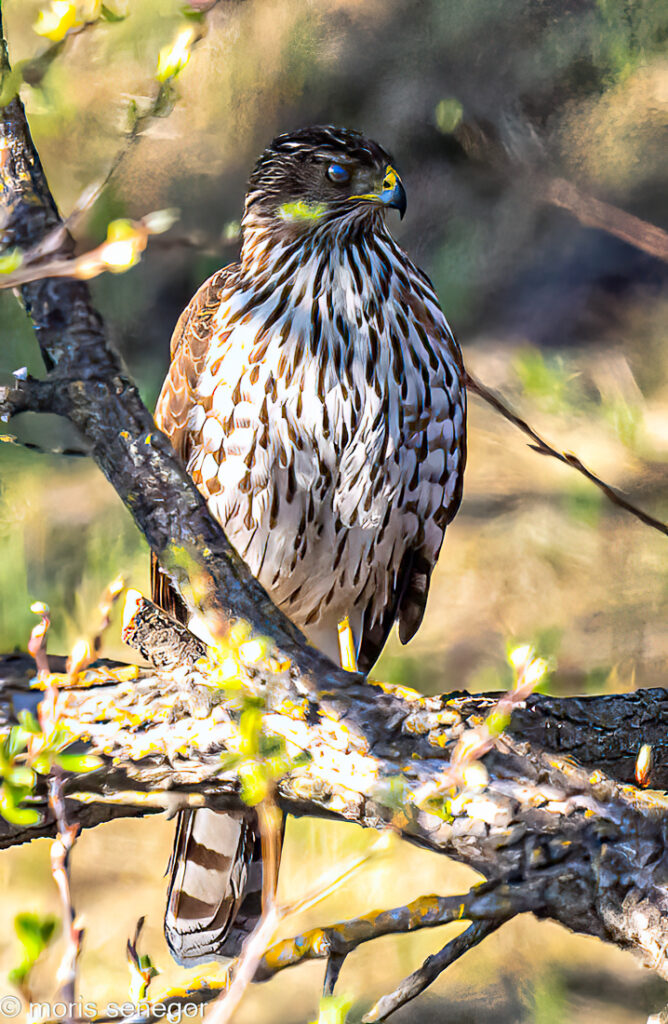
Photographing Hawks
Part 2: HAWKS

Of the various raptors in our area, hawks are by far the most common. They can be easily spotted atop roadside poles and wires, keenly observing the ground for prey.
My favorite sites for hawk spotting in the north county are the roads around Cosumnes Preserve and Walnut Grove. I call Walnut Grove Road west of I-5 “hawk central.” You can always find some there. Turning south, Staten Island Road is also a regular home to hawks.

In the south county I am fortunate to work at San Joaquin General Hospital with its sprawling, mostly rural French Camp campus, as well as nearby fields where there are plenty of hawks.

Spotting hawks is easy if you practice the following exercise: Drive slowly and pay attention not only to the road but to passing patterns in the surroundings. Try to detect breaks in the pattern, something atop a pole or a wire. After a while you’ll be seeing more hawks than you ever imagined.

The most common hawk species in our area is the red-tailed hawk. These are skittish birds that can easily spot you from afar with their keen eyesight. They are quick to fly away before you can squeeze a few shots.

My strategy is to stop my car two or three poles away, exit quietly without banging the door, and slowly approach the bird, all the while squeezing a few shots with my 600 mm lens. Get a few in the can and see how close it’ll allow me to come. As I approach closer, the images get better, and the earlier shots can be discarded.
All the while I ready myself for takeoff. The red-tail takes off abruptly, often catching the photographer by surprise. That initial takeoff shot is a rare treat. If you miss it, no worries. Try catching the bird in flight. Their wings and tails are magnificent and make for dramatic photos.

Be aware that most red-tails will fly away from you and give you a butt shot. No good. Every so often you’ll get lucky and it’ll fly in circles over you. Try to catch a few shots as it banks in a sunlit direction or as it directs its eyes at you.



Be aware of wires. As the bird takes off the electric wires will be in your photo, crossing the bird. They can be removed during post-processing with healing tools, but this can be a time consuming, cumbersome process. I try to position myself so that there will be minimal wire interference with the shots. Nevertheless, it is unavoidable in most situations.


Our second most common hawk is the Swainson’s. These are migratory birds that are in our area during spring and summer. They winter in Central and South America. Once on the verge of extinction, Swainson’s have made a good comeback and are abundant in the areas I described above.

They hunt small mammals and insects, and like redtails, can be found atop poles and wires. They are not as skittish and will allow you to come closer to them with a camera. Ultimately, they too will fly off. So, watch out for that all important take-off moment.



Swainson’s are screamers. They have a special screech that once recognized, is unforgettable. When in flight if you hear them screaming keep your finger down on the shutter. You’ll get some great shots with their beaks open.

I am particularly lucky to pass by Swainson’s on my daily commute to San Joaquin General where they hang out on poles every morning. I can stop, shoot a few frames, then go on my morning rounds.

As you drive and look for breaks in patterns, watch out for the hawk atop a pole that keeps dipping its head up and down. It’s a telltale sign that the bird is eating. You won’t see the prey until you come close and extend your zoom lens.

Swainson’s are particularly unfazed with your presence while eating. They’ll let you shoot from up close and never fly away. The resulting pictures can be gory for some, glorious for others.

A less common hawk species in our area is the red-shouldered hawk with its distinctive black and white checkerboard pattern on its wings.


This year I discovered a pair nesting at our campus, not far from the back entrance to the old hospital building. I was fortunate enough to catch a couple mating, female atop male.

I spotted this juvenile one day as I was exiting the hospital parking lot along a fence separating Manthey Road from I-5. I was very close to it. So, I stayed in my car and avoided spooking the bird. I quietly put my window down and squeezed a few shots with it perched. Once it took off, I was lucky enough to catch it in flight, a difficult feat when shooting from within a car in a narrow, obstruction filled environment.

I came upon a rare find on Highway 12 near Clements. It was a leucistic red-tailed hawk. Leucism is an incomplete loss of pigmentation, nearly albino but partial.

I was able to capture only one shot before it flew away, but that was enough.

One hawk species that I have not encountered here in San Joaquin County is the Cooper’s. I see Cooper’s photos regularly posted by bird photographers from nearby counties. I ran into this juvenile Cooper’s on the grounds of the Donum Winery in Carneros. It was chasing a hare too large to capture. Juvenile birds are prone to mistakes of inexperience just like their human counterparts.
I am delighted by the abundance of hawks near where I live, a rich variety. It is a rarity for many, especially city dwellers. Communing with them is a most relaxing, fulfilling experience.





